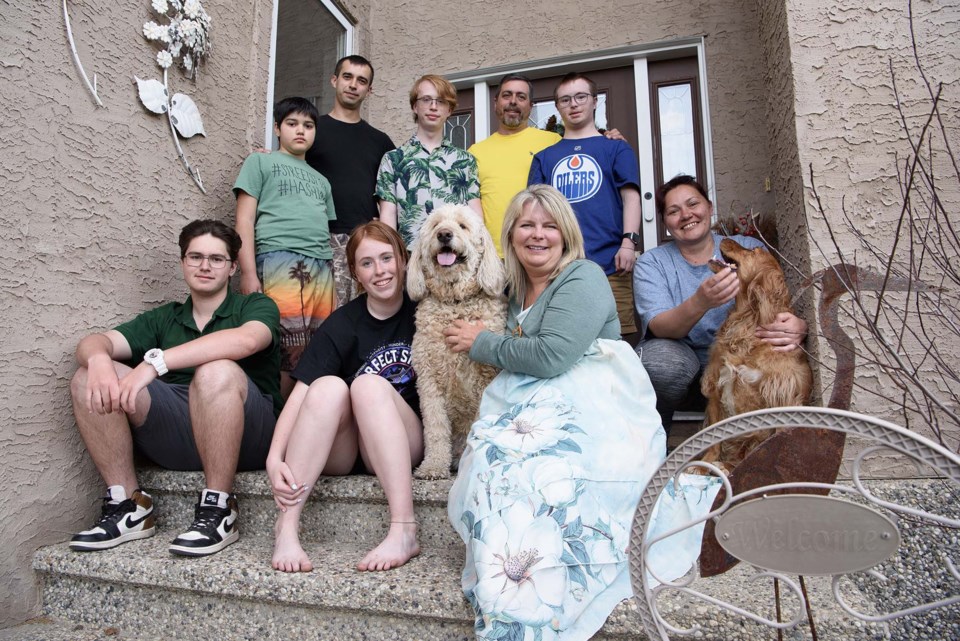There’s a sign in the window of the St. Albert and District Further Education Association.
“New mentors needed,” it reads, an understatement if ever there was one.
Coun. Ken MacKay made the connection between the city’s latest municipal census data, released earlier in the day, and the services the Association provides to newcomers to St. Albert (and Canada) after Muna Abdulhussain, newcomer manager, and Ahmad Sanni, chair, spoke to council about what they do with their annual grant from the city at a meeting Dec. 17.
The organization supports newcomers to the city (and to Canada) connect with services and amenities that make life better and more affordable.
“There’s been an increase in the diversity of new residents coming from outside Canada,” Coun. MacKay said, noting the proportion has increased from 6.62 per cent in 2018 to 10.67 per cent this year. “Of interest, where we used to have English/French, we now have a vast diversity of linguistics. If anything, that’s actually going to increase the need demand for your services.”
The city remains predominantly English in terms of mother tongue but in 2024, 10.2 per cent of residents spoke a different language at home, up from 9.1 per cent in 2018.
In 2023 and 2024, the association has supported more than 1,000 people, including more than 600 from Ukraine.
“We are now witnessing a new wave of diversity in our community,” Sanni said. “This year alone, we have welcomed 640 individuals, including families South America, to Philippines, Middle East, Cameroon, Nigeria, China, Thailand, and other regions.”
Abdulhussain said the group has been in the community for 50 years.
“We really appreciate the support we get from the city and the community.”
By the numbers
The new municipal census, conducted between May 27 and June 27, confirms the city’s population has grown to 72,316, meaning 6,234 more people (net) have made the city home since the last count in 2018. The city has been growing at an average of 1.51 per cent each year.
The number of dwellings has grown, too, to 29,421 (746 of them vacant), an addition of 3,082 new homes.
They shelter an average of 2.44 residents and more than 67 per cent of them are single-detached houses. The city has a total of 28,323 dwellings, of which 746 are vacant. The census report indicates there are another 706 empty lots and 392 dwellings under construction.
In 2024, 84.5 per cent of residents own their home, up slightly from 83.46 per cent in 2018.
Mayor Cathy Heron thanked the residents who participated. The response rate, the dwellings that responded divided by the number of occupied dwellings in St. Albert, was 97.8 per cent.
“The census data provides council and administration with vital information that is used to inform our decision-making and paths forward for key services that support our growing, diverse community," she said in a news release.
Lacombe Park has the most St. Albertans: 10.9 per cent of the total population or 7,905 people live there, an increase of 4.7 per cent since '18, with Grandin and Deer Ridge close behind.
We are older in 2024: "The senior population (65+ years) rose significantly to 22.14 per cent, up from 17.9 per cent in 2018, while the proportions of infants, toddlers, school-age children, and young adults all saw slight declines," the census executive summary reads. It adds the number of adults aged 30 to 44, and mature adults, 45 to 64, who live here remained "relatively stable."
One-quarter of residents are fully retired, 44.77 per cent work at least 30 hours per week and 10.09 per cent work part-time.
Edmonton remains the top destination for commuters, (42.7 per cent), and St. Albert the second-most likely place for a resident to claim as their work community, as 26.8 per cent of respondents say they work and live here, up five per cent from 2018.
An in-depth report on the census is posted to the city's website.




